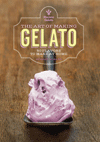Novel dairy categories deliver probiotics
Frozen dairy and cheese categories offer extended shelf life for probiotics.

Consumer awareness of the health benefits of probiotics continues to grow. And more consumers are abandoning probiotic supplements and looking for real food carriers.
Traditionally, yogurt and fermented milk drinks have been the primary delivery vehicles for probiotics. But probiotics are showing up in other categories, including frozen dairy desserts, cottage cheese and plant-based beverages.
While these products may provide opportunity for extended shelf life and protection of yogurt culture viability, each has its own technical challenges. Let’s explore the array of potential dairy foods that might deliver probiotics.
Probiotics in frozen dairy
The most common claims for probiotics are “contains probiotics” or a statement about the level of beneficial bacteria in the product. For companies to make a probiotic claim, the species should be present at an efficacious level at the end of the product’s shelf life. Frozen dairy provides some technical advantages for extended shelf life; therefore, numerous frozen dairy products with probiotics are showing up in the market.
Unilever introduced a light ice cream with probiotics called Culture Republick. The company’s website states that “3 billion live cultures go into every pint of our light ice cream. Dig in, feel inspired, and feed your microbiome.” One of the creative flavors is Tumeric Chai & Cinnamon, which features the Ganaden B30 probiotic.
Danone North America’s Dannon YoCream frozen yogurts also contain live and active cultures. The cultures include S. thermophilus, L. bulgaricus, L. lactis, L. acidophilus and Bifidobacterium. With 100 million cultures per gram, the products have 10 times what’s required to feature the National Yogurt Association’s Live and Active Cultures seal, the company notes on its website.
“Ice cream and frozen dairy products are excellent carriers of probiotics,” said Arthur Ouwehand, Ph.D., technical fellow with DuPont Global Health & Nutritional Sciences. “A standard portion of ice cream can provide a meaningful dose — 109 CFU* — of probiotics such as Lactobacillus acidophilus NCFM or Bifidobacterium lactis HN019 with virtually no loss of viability after 12 months of storage.”
Rapid freezing of ice cream mix contributes to probiotic stability. Various studies have shown that ice cream maintains probiotic viability over six to 12 months of storage (https://tinyurl.com/y546pgqn).
Ways to improve probiotic stability include selecting strains that are resistant to freezing, adjusting the formula by adding prebiotics, keeping the product pH above 5.5 and minimizing oxygen (https://tinyurl.com/y5sljjhs).
Cheese and cottage cheese
Cheese and cottage cheese are also excellent vehicles for probiotics. Cheese, because of its pH, buffering capacity and fat content, provides additional protection for probiotics passing the gastrointestinal tract.
“Servings of these foods have been shown to be able to deliver a meaningful dose [109 CFU] of probiotics such as Lactobacillus rhamnosus HN001,” Ouwehand said.
Lifeway Foods sells a farmer cheese that is packed with probiotics. And organic probiotic cottage cheese under the Nancy’s brand touts “billions of live probiotics,” including L acidophilus, Bifidobacterium lactis and four strains of lactic cultures.
Unique dairy products with probiotics
Lifeway also produces the bioKEFIR high-potency probiotic, which has 50 billion CFU in a 100-milliliter serving. Three custom formulations support immunity, digestion and heart health.
JoeFroyo Probiotic Cold Brew, meanwhile, combines probiotics with lactose-free cultured milk and Arabica cold-brew coffee; it is currently available in several western states.
Numerous plant-based milk and yogurt alternatives also tout probiotics.
Research published by the National Center for Biotechnology Information recognizes that supplements seem to be an efficient carrier for beneficial bacteria, but probiotic foods have the upper hand (https://tinyurl.com/y2l2y8ov).
Looking for a reprint of this article?
From high-res PDFs to custom plaques, order your copy today!







